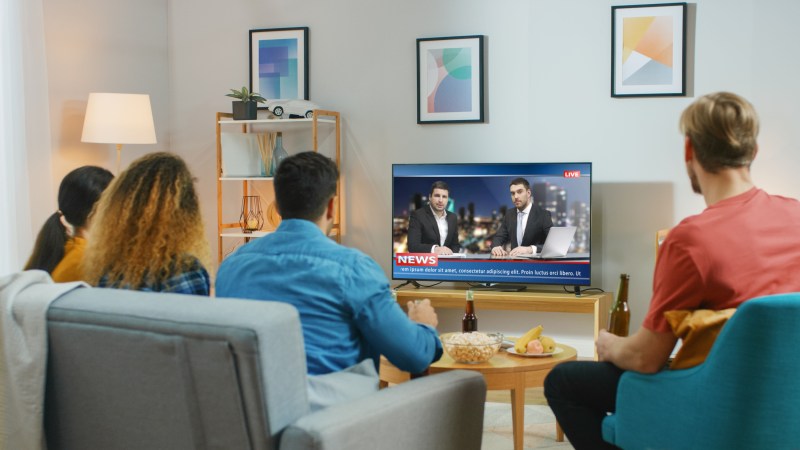The COVID-19 pandemic caused seismic shifts in the way we interacted with one another and otherwise lived our lives. Words like “social distancing,” “Zoom happy hours,” “hybrid work,” and “drive-by birthday celebrations” entered our lexicons as we attempted to grapple with slowing the spread of the virus.
Though life has returned to a more normal version of normal in 2022, the imprint of COVID-19 is still felt in the way we consume media. A report from Visual Capitalist, an online publisher that seeks to make information more accessible, broke down the shifts by generation based on a survey of more than 2,000 people conducted at the beginning of the COVID-19 pandemic. Most of the participants (2,337 out of 2,014) completed a follow-up survey in December 2020.

In the original survey, almost half of Baby boomers (42%) were watching broadcast news, with most other sources attracting 15% or less each (the one exception to this was online TV/streaming, which 21% of respondents reported they consumed).
Gen-Z’s consumption of digital media spiked in the early days of the pandemic. As the world moved (and school, which most Gen-Z participants likely attended) online, people in this demographic watched more online, played more video games, and streamed TV and films. Podcasts were also huge, with nearly 11% of Gen-Z-ers listening to them in April 2020. By December 2020, perhaps looking to diversify their consumption, 25.8% of Gen-Z respondents said they were listening to podcasts.
Meanwhile, only 17% of them were watching broadcast news in December 2020, down from 24% in April of that year.
Millennials also turned to digital media. However, the people with Visual Capitalist noticed a trend in news consumption — it went down across the board. Broadcast TV fell 11.1 points from 35.7% in April 2020 to 24.6% in December 2020. Physical press consumption went from 20.3% to 8% — a difference of 12.3 points. Online TV and streaming tumbled from 42.2% to 39.2%. Hey, maybe there decided to practice self-care by not doom-scrolling.
What did millennials do while they weren’t consuming news or streaming movies? It appears they listened to podcasts (increased from 20.9% to 29.6%).
Gen X had similar consumption habits to their millennial counterparts, with broadcast TV viewing falling 16.6% and online TV/streaming films going down 10.9%.
Keep in mind both of these cohorts make up the majority of the workforce. As some states and businesses started pulling employees back to work, these generations may have had less time to consume media.
Baby boomers’ use of broadcast TV saw smaller declines (42.3% to 36.7%).
When Americans were searching for news, different generations considered different outlets as “trustworthy” sources for COVID-19 information.
Fewer than 30% (28.9%) of Gen-Z respondents said they found mainstream news stations like CNN trustworthy. Gen X was more amenable to mainstream media — 40.1% said it was reliable.
Gen Z preferred to look at the World Health Organization’s (WHO) website and publications. More than half (50.3%) of Gen Z considered the WHO the most trustworthy source compared to just 39% of Gen X followers.
As for the lasting effects of the pandemic, nearly 30% of Baby boomers said they’d continue to watch broadcast TV. Meanwhile, it didn’t even make the top three responses for Gen Z (online videos, video games, and online TV/streaming films did) or millennials (Online videos, online TV/streaming films, and music streaming did).



